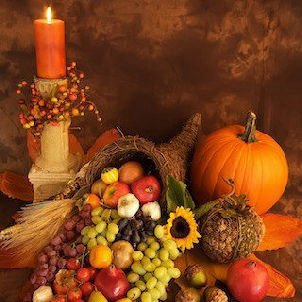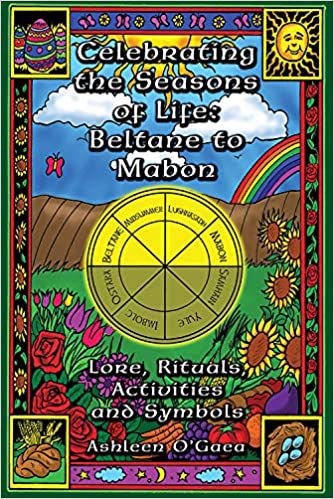As the clergy invoke, everyone else echoes the hails and welcomes. (Solitaries should repeat those lines, with uplifted arms the second time.) After a heartbeat’s pause, a slow beat begins on drums, with clapping hands, stomping feet, or with rattles. To this beat (a solitary will keep slow time in his or her head), the Priest goes to the altar and picks up the decorative grain. He dances with the corn or wheat above his head (if you are a solitary woman, identify yourself as the God when you pick up the grain), spinning slowly as he progresses deosil around the Circle. He may wish to pick up the pace a bit in this part of his dance.
When he reaches South, he cries out something such as, “I am strong! I am ripe!” Simultaneously, he dances in place vigorously, with great leaps. Eventually, though, he beings to grow weary. He begins to make his way. More slowly now and lowering the grain he holds, to the West. By the time he gets there, he is moving slowly and stiffly. Perhaps he gives the corn or wheat a last shake or rattle over his head in memory of his Summer vitality, or perhaps he dances jiggishly in place with one last burst of energy.
Then the Priestess comes to him and says, “My lord, it is time.” She may take the grain from his hands and put it in the cauldron, or she may guide his hands as he lays it there himself. He will then kneel beside the cauldron. If you are using a dark cloth in this rite, the Priestess covers his head with it, and if the setup allows, he lowers himself to the ground and lays there, still, for a few moments. All the while, the rhythm is maintained by the rest of the celebrants.
For a moment, the Priestess bows over the fallen Priest/God in grief, and then she stands and turns inward to face everyone in the Circle. She dries her eyes and, clapping her hands, joins in the rhythm, and begins to speed it up a little. When the energy begins to rise, she says, “The God has died, yet He has not died! He is among us still!” While the livelier rhythm continues, she reaches into the cauldron and pulls out the bag of popcorn, and holds it over her head as if it’s a trophy she is showing off. As she does this, she nudges the Priest with her toe, and he too rises, throwing off the cloth if he is covered by one.
The Priestess lowers her arms and the Priest feeds her a bite of the popcorn, saying, “May you never hunger.” She then feeds him a bite, repeating the same words. Next, they toss a few bits of popcorn into the air as they take the bag around and offer it to everyone present. When everyone has had some popcorn, the bag is set down at the base of the altar and the Priest and the Priestess proceed to consecrate the Ale, which they share as well. After that, the Circle proceeds in the “usual way” until it is closed.



